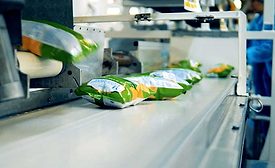Regulatory
Your opinions on USDA's proposed Salmonella regulations and your priorities for your food safety programs in 2025.
Read More
PFAS in Food Packaging: What You Need To Know
FDA's and EPA's regulation of PFAS is developing, and it is an important consideration for food producers and packagers
February 13, 2025
Quality, SQF, and the Importance of Changing Food Safety Behaviors
Even though the rules seem to state that food safety is all about documentation, in principle, all of the regulations and guidelines point to a requirement for behavior change
February 13, 2025
Widening Recalls and Class Action Lawsuits: Alarming Recall Trends in 2024
The world of recall exposure and management is changing, making it more important than ever that you are fully protecting your company and brand
February 11, 2025
Cannabis Innovation From a Regulator's Perspective
Each novel cannabis product that hits the marketplace introduces a new series of questions regarding product safety and efficacy
February 10, 2025
Never miss the latest news and trends driving the food safety industry
eNewsletter | Website | eMagazine
JOIN TODAY!Copyright ©2025. All Rights Reserved BNP Media.
Design, CMS, Hosting & Web Development :: ePublishing













